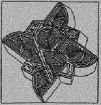Contact
Home
Projects
Events
Languages
|
|
Project A-17
Dialektgrammatik, freie Variation und Sprachwandel:
Brauchen wir ein Konzept von Mikrovariation?
Project Abstract
The central question of this research project is whether the syntactic variation between closely related dialects or diachronic stages of the language can be captured with the same formal tools as the parametric variation that holds between languages and has been captured by the Principles and Parameters Model of Generative Grammar and its further development in the Minimalist Program. In other words, do we need a substantially different notion of micro parameters?
One problem is that the Chomskyan model of grammar is in a certain sense "too precise
" by strictly determining the admissible structures in a given language. Given that syntactic variation is ultimately rooted in the lexicon's coding of functional features, syntactic microvariation should be traced back to lexical differences. In the initial phase of A-17 this hypothesis was tested with respect to infinitive constructions in Alemannic, Bavarian and Standard German. The preliminary result of the investigations is that the variation which holds among infinitive constructions can indeed be derived from the lexical nature of the infinitive markers zu, clitic z' and the contracted form zum. Word order variations within the verbal complex which are also found in the standard language can often be traced back to extra-syntactic constraints (prosody, parsing etc.). Thus, it is so far suggested that a separate theory of micro-variation is not called for.
The phenomena to be looked at in detain have been expanded in the second phase of A-17 which has started in 2006 toward the complementizer system and the organization of the clausal left periphery. Empirical research with speakers of Bodensee Alemannic, Bavarian and Franconian has yielded promising results about constraints which control the so-called doubly-filled Comp, i.e. the simultaneous placement of wh-phrase and complementizer (dass, "that"), as well as topicalization across the C- or wh-position ("emphatic topicalization").
Publications
|



